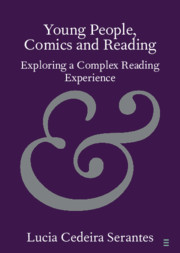Element contents
Young People, Comics and Reading
Published online by Cambridge University Press: 07 February 2019
Summary
- Type
- Element
- Information
- Online ISBN: 9781108568845Publisher: Cambridge University PressPrint publication: 07 February 2019
References
References
- 8
- Cited by



